This is the second part of ‘My System: Karate-jutsu’. If you haven’t read part 1, then you should. I’m just sayin’, dawg…
Okay guys, I’ll try to get straight to the point, and continue from where that ridiculously handsome man left off in part 1 of this brief explanation of “my” Karate-jutsu system. Well, it is actually my interpretation.
This is the next picture in the series:
As you see, there are now levels beginning to form on this Karate-jutsu pyramid. Namely, two levels on each side.
Here’s what the two lower levels represent:
Basics.
To the left we have the solo (one person) basics, which we call “Kihon Dousa“ (lit: “Basic Movements”) and to the right we have the two-person basics, which are dubbed “Kihon Kumite” (lit: “Basic Hand-Intertwining”).
The aim of these two levels are to show and teach you fundamental Karate skills. That’s why they’re called kihon.
If you’re interested, here’s the Kihon Dousa in more detail:
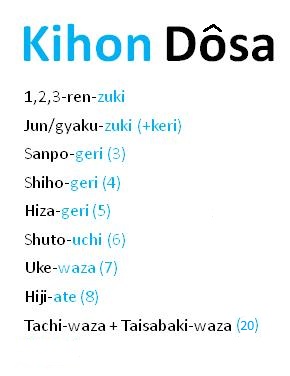
Yes, I know, the original colors were inverted (blue/red), but never mind. I don’t know why I changed them. Anyway, as you might, or might not, see – the Kihon Dousa is about a couple of basic concepts:
- How to utilize the different parts of the body; (seiken, shuto, nukite, empi/hiji, hiza, josokutei, sokuto, kakato and other fancy Japanese names for stuff such as heel, elbow and knee. Just basic weapons, really.)
- How to utilize the different directions and angles; in attacking/defending/moving (8 basic directions + 2 [straight front/back]= 10 basic directions), in the 3 different planes (jodan, chudan, gedan).
- How to combine the above two points; simultaneously moving, defending and attacking, combining the bodyparts, left and right, up and down, horizontal and vertical using very, very, basic ideas and concepts.
The Kihon Dousa gives us very clear information, since it is taught in a logical manner (even goes in numerical order…) but it leaves room for plenty more.
Plenty more of which we find in the Kihon Kumite.
Here’s it is:
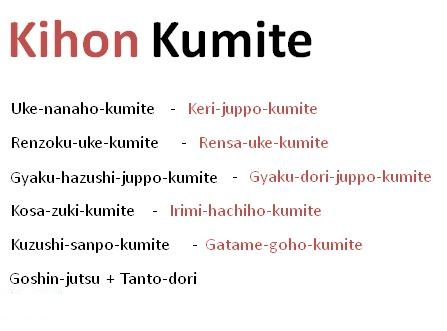
As you see, our Kihon Kumite is divided into pairs of two.
The kumite to the left are the shorter/easier kumite, whereas the kumite to the right are more complex and/or longer ones. The reason to why these pairs are connected is because they teach the same major principles, albeit in slightly different ways.
Yeah, you heard me.
Principles.
Many great “grand-masters” talk about them, tossing them around like a friggin’ fruit salad, but rarely do you see specific exercises created in order to teach these defined principles. Well, today is your lucky day, because all of the Kihon Kumite exercises are made with teaching important principles in mind.
“Principles?! What a waste of time! If I want a system to teach me self-defense, it should teach me how to smack somebody’s teeth in, not how to effectively apply brutal, fancy, boring, awesome principles!”
Well, techniques aren’t universal. They have limits.
Principles don’t.
Because if they had, they wouldn’t be principles to begin with, and that would make me a liar.
ARE YOU CALLING ME A LIAR?!?!
Morally superior human being yes, but liar, no.
My saint-like nature doesn’t allow that kind of evil.
Anyway, what the above paragraphs of nothing tries to tell you is that the Kihon Kumite is created with teaching principles in mind, and teach it does. I’m sorry, what’s that? You want me to give an example of one of these exercises? Sure, why not.
I could, for example, tell you about Kuzushi-sanpo kumite:
Kuzushi-sanpo means three (san) methods (ho/po/bo) of unbalancing (kuzushi). It teaches the three (1. straight, 2. circular and 3. dumping) basic methods of breaking your opponents balance (hence, how to maintain your own balance when subject to these) along with some very important principles.
Perhaps the most important ones being:
- ‘Ju no ri’ (the classic Judo principle of power through yielding)
- Active/passive resistance (of the attacker)
- Combining spiraling/diagonal movement patterns (when dealing with joints, kansetsu-waza)
- ‘Tsukuri’ (preparation, of which there are two kinds, a) aite no tsukuri and b) jibun no tsukuri )
- The triangle point principle (optimal unbalancing)
Please don’t ask me to explain any of these. I will seriously explode if you don’t just magically *get it*.
Another Kihon Kumite which would be fairly easy to convey in a bullet point list is Uke Nanaho Kumite, which is best translated as “seven methods of blocking”. Except for teaching the seven basic blocks (middle in/out; low in/out; open hand in/out and high) it is an exercise primarily in the following basic principles:
- “Position before submission” (sorry, nothing which means “to attack” rhymes with “position”, so it had to be “submission”.)
- ‘Ma-ai’ (controlling relative distance)
- Expansion/contraction (controlling power output through varying the degree of expansion/contraction in the body, joints)
- ‘Go no sen’ & ‘sen no sen’ (the two first basic tactics of countering)
- ‘Zanshin’ (link)
- ‘Ikken hissatsu’ (link)
But, even though these basic exercises (kumite) are great and all, there’s a couple of huuuge drawbacks to them.
For instance, they are not all 100% useful in an outright street-fight. Of course, they’re not designed for that purpose to begin with, but most people never get that fact! That’s why some people tend to think the Kihon Kumite exercises are a “waste of time” or “uneffective” and “unrealistic”, when really they’re not on the same page as the rest of us.
That’s not to say these exercises don’t work in self-defense. On the contrary, just a couple of months ago one of our instructors had to use technique #1 from Gyaku-dori-juppo-kumite (a wrist grab, joint lock counter) against some random drunk guy, and it worked like a charm.
A hammer can be used for a lot ot things.
While we’re still on the subject of drawbacks and downsides; this whole Karate-jutsu system/pyramid has another big negative side, which is that many people tend to quit before they get somewhere!
Most commonly around green belt, it seems.
Why?
Because for the longest time you will constantly feel like you suck. Like nothing works. Like when you finally get a detail right, a new – even more serious – detail inevitably pops up.
And most people don’t like that feeling.
But they should.
Because sucking at something is a gift. It’s nothing but free information from nature, and the message reads: “Practise more”.
Anyhoo, I digress.
Let’s move on to the next picture:
Yeah! Now stuff is starting to happen!
Here we have the two next levels. To the left we have Kata, which is the higher application of the Kihon Dousa, as implied by it’s position in the pyramidal hierarchy. We practise basically the usual 60-odd Shito-ryu kata, with small deviations.
To the right we have Jissen Kumite.
Jissen Kumite is what you would imagine MMA (mixed martial arts) to be… if you allowed everything.
Remember that post about biting the other week?
Yeah.
Jissen kumite (“jissen” means “real/actual fighting” in Japanese, by the way) is the practical application of the Kihon Kumite. If what Bruce Lee once said about the three stages of learning [a) understanding your own body, b) understanding your opponents body and c) the application and combination of the two former] is correct, then I guess Jissen Kumite is the “c)” stage, where Kihon Dousa and Kihon Kumite are the two first.
And for those of you who think MMA should “never be put in the same sentence as Karate”, keep in mind that yes, modern Karate is a far cry away from the largely American penomenon of MMA that we see today, but it is…
…the original MMA.
(Of course, at that time it was obviously called Toudi – consisting of a mix of the martial arts of 1. Ti’gwa [the ancient percussive arts of Siam], 2. Kata/hsing/xing [based on Fujian China-based quanfa/kung-fu], 3. Qin-na [the Chinese art of seizing and controlling], 4. Buki’gwa [the weapon arts, today known as kobudo] and 5. Tegumi [originally the Chinese-based art of Shuao Jiao, today practised in Okinawan Sumo]).
If you practise old-school Karate, you’re a mixed martial artist.
And if somebody says otherwise, they’re lame as a duck.
Not the metaphorical lame duck either, but a real duck that was actually lame, like, maybe from stepping on a land mine or something.
Next picture:
Okay, now we’re almost at the end. Hold on just a little more!
As you see, there are two new arrows, pointing at the star (goal) at the top.
Because here is where the two sides ultimately join.
What does the star contain?
Well, if I put it this way:
What would you get if you combine the study of forms (kata), built up by basic solo drills (kihon dousa), with all-out fighting (jissen kumite), laying on a foundation of excercises teaching principles of combat (kihon kumite)?
Answer…?
This picture says it all:
Yeah. That’s right.
Bunkai.
(Self-defense)
That’s the aim. I mean, seriously, when the old Karate pioneers spoke of “studying five or six kata your whole lifetime”, or “kata is the heart of karate”, or “the secrets are contained in kata”, did you really think they were talking about mindlessly wandering through 50+ geometrical collections of offensive/defensive movements (kata) two times a week just to build up some sweat? Because your curriculum “says so”? Because you will be enlightened by doing it?
Believe me, there tons of better ways of building up sweat, toning the body, losing weight or getting enlightened than dragging yourself through fifteen kata two times a week.
They were never intended to be used that way.
Remember, a hammer…
Look, when Mabuni Kenwa wrote: “Correctly practicing kata – having sufficiently comprehended their meaning – is the most important thing for a karate trainee.” he wasn’t talking about twisting your rear foot 30 degrees when standing in nekoashi-dachi, or keeping your front hand perfectly aligned with the moon and stars on the fifth of every second month of the Roman calendar.
Those points aren’t important unless you compete in the sport of demonstrating kata.
Heck, if you’re convincing enough they aren’t important even then.
Sakumoto Tsuguo sensei once said: “The more you know about Karate, the less you need to change it.”
Looking at Karate as a whole today, what story are we telling ourselves?
Or other martial artists?
Sorry, I’m totally off the subject, again. That’s what happens when you’re unresonably handsome, I guess…
Here’s the last picture.
Just to sum it up:
So there you have it.
“My” system of Karate-jutsu.
And as a last note, in case you need to know, this Karate-jutsu pyramid is the base for our Kobudo (Kobu-jutsu) pyramid. Yeah, there’s one of those too. It kind of requires you to have climbed halfway up the Karate-jutsu pyramid though, or you’ll be in deep isht…
Feel free to share your thoughts.
And keep it real.

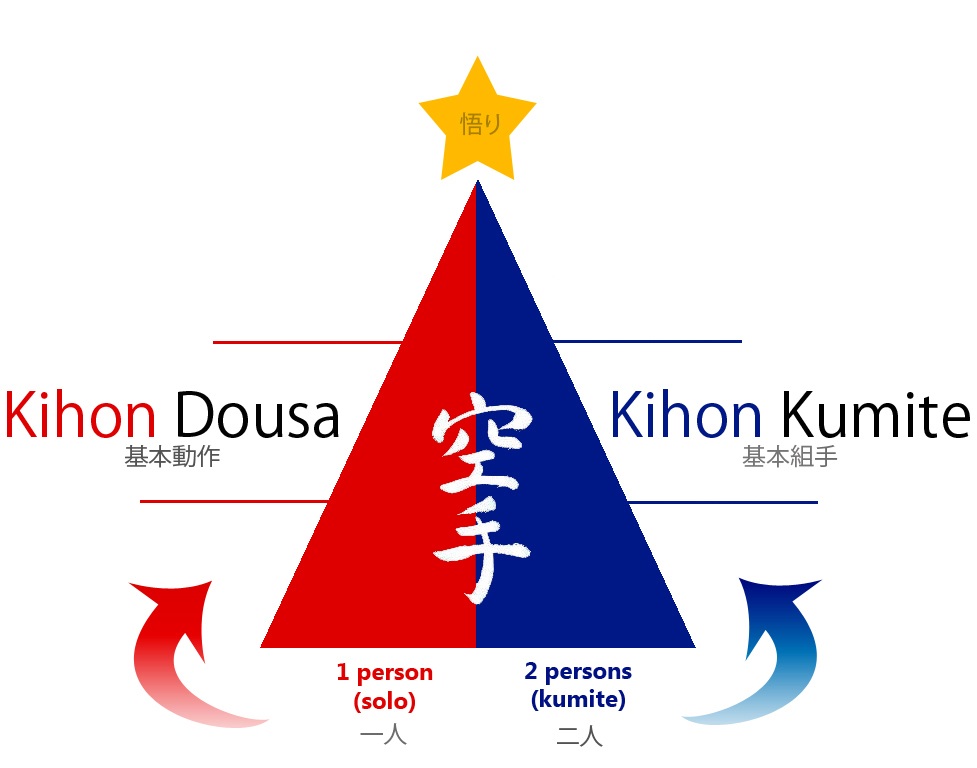
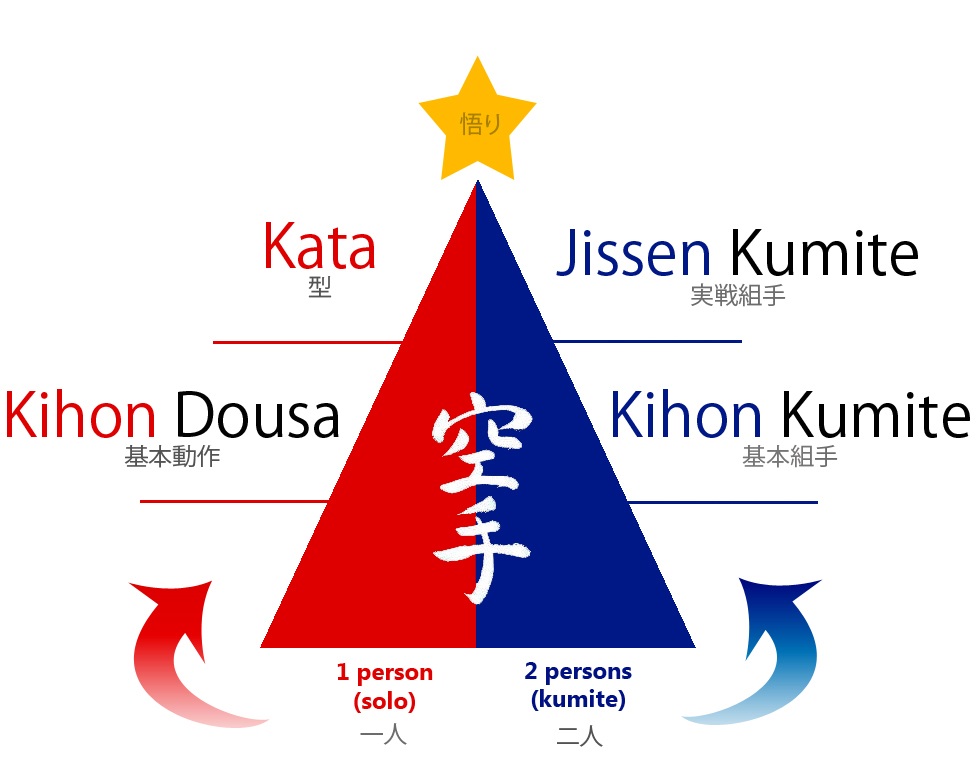
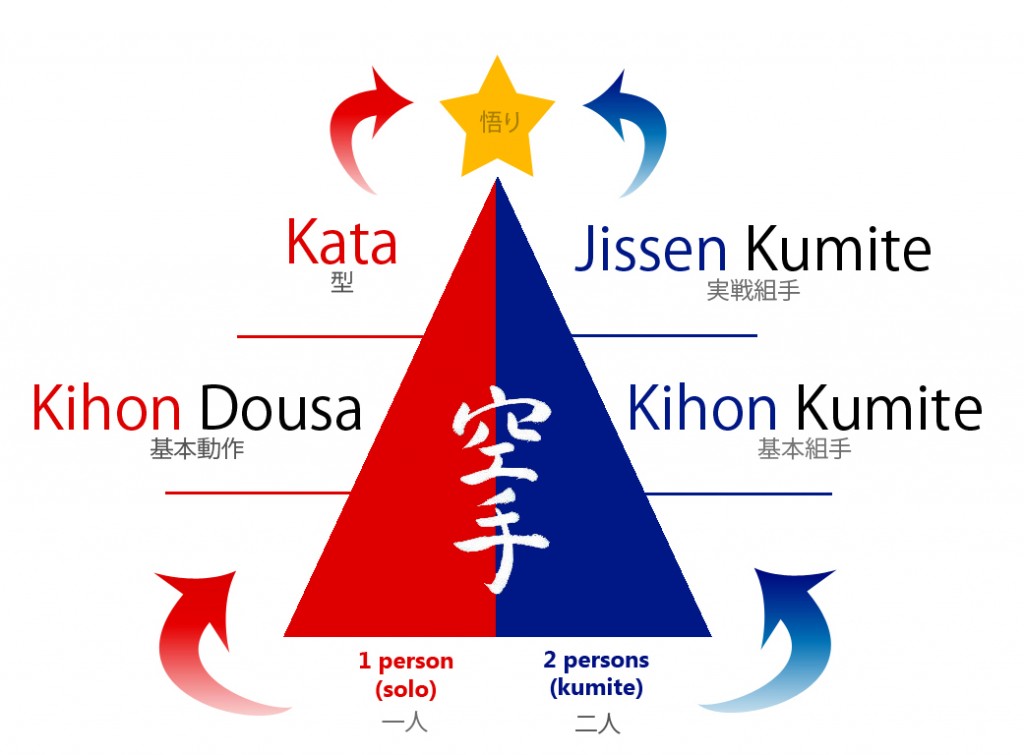
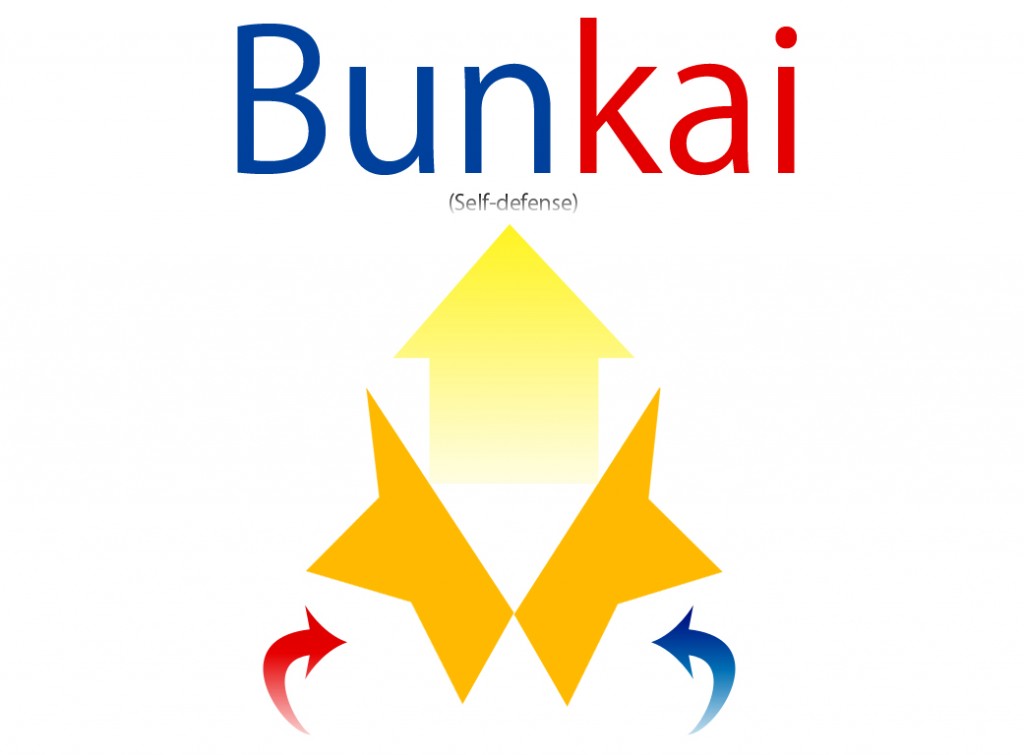
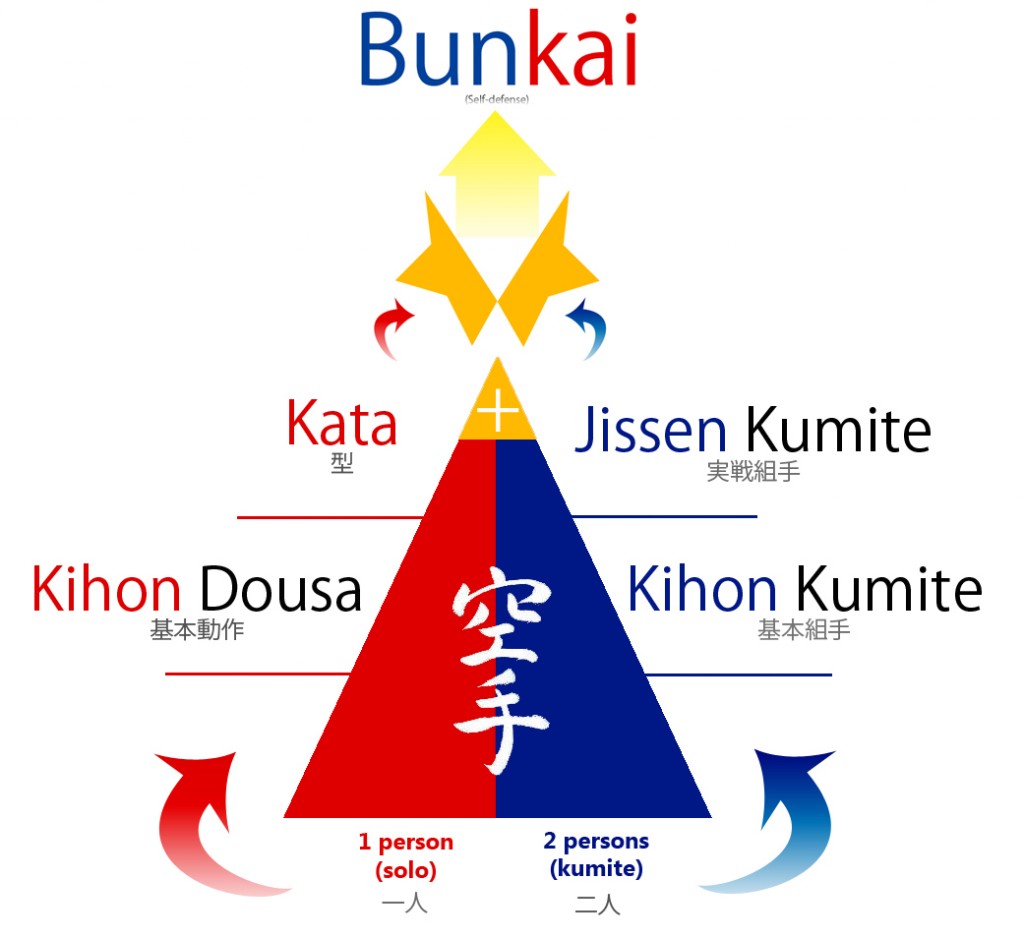
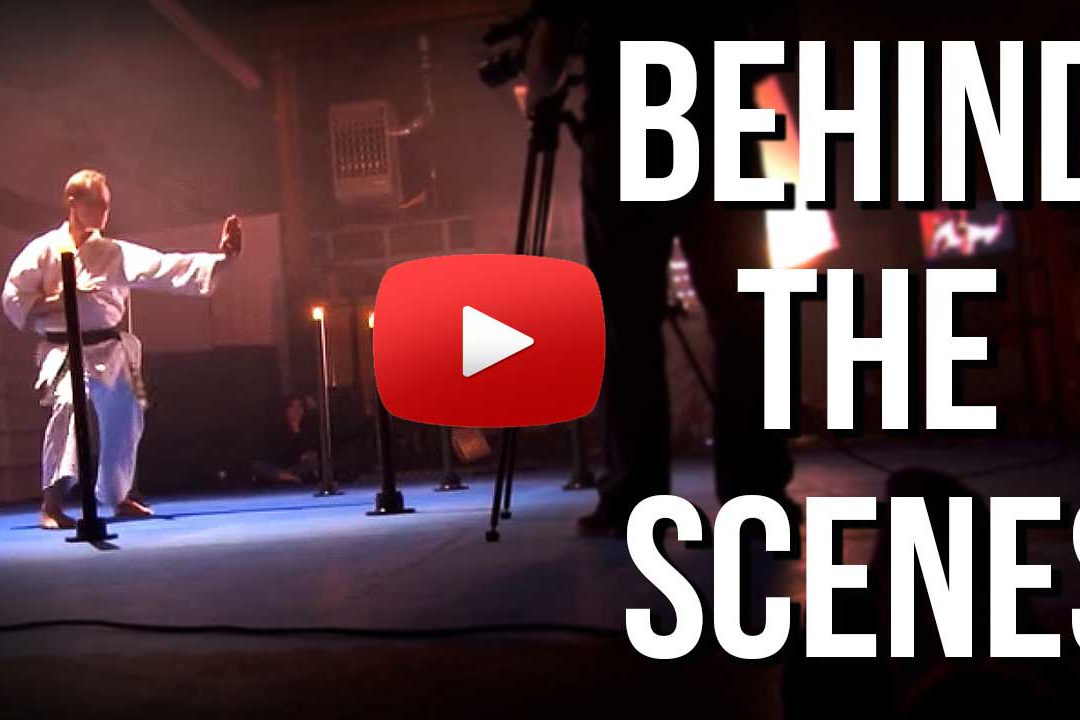

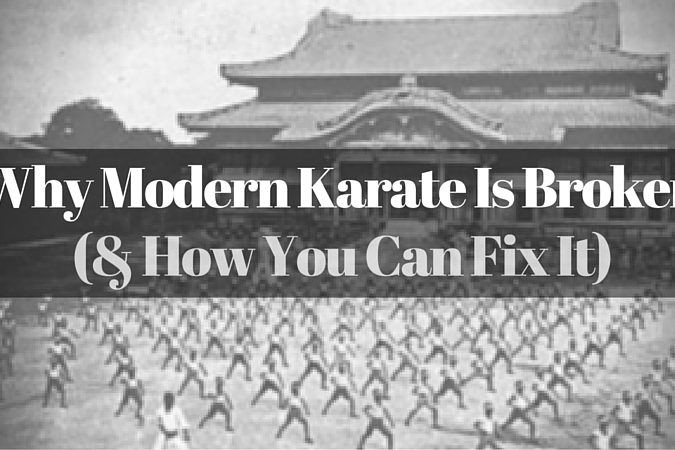
22 Comments